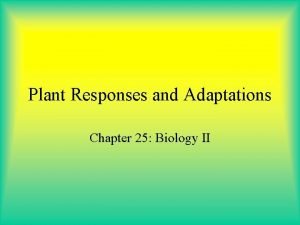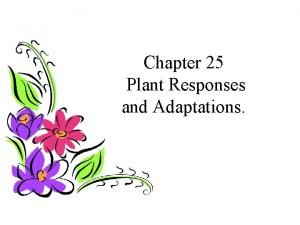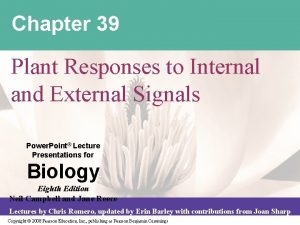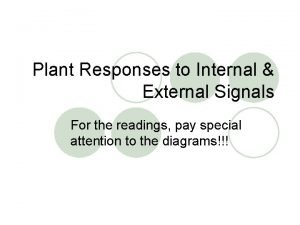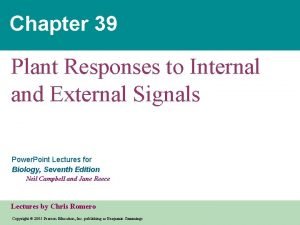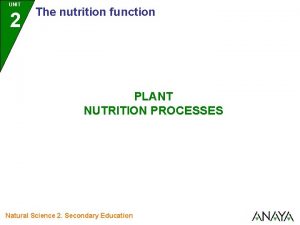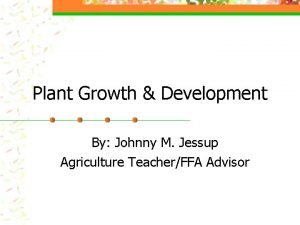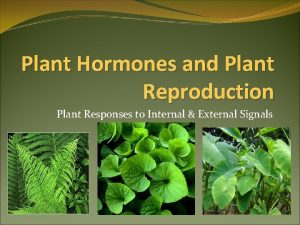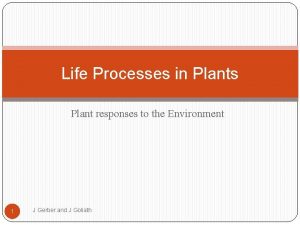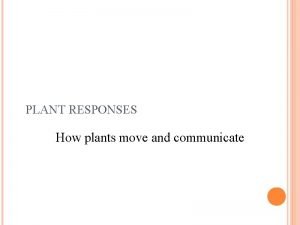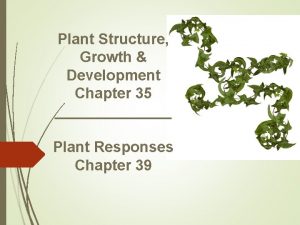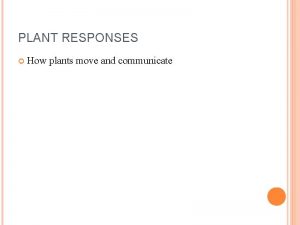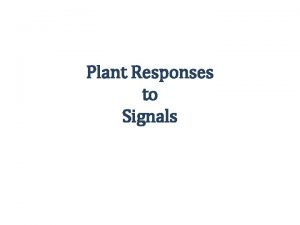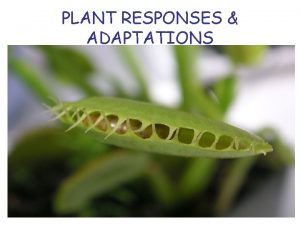Plant Processes Section 2 Plant Responses Section 2












- Slides: 12

Plant Processes Section 2: Plant Responses Section 2

Plant Processes Section 2 Key Ideas • Why are hormones important for plant growth and development? • How do tropisms affect plants? • What triggers seasonal change in plants? • How do nastic movements affect plants?

Plant Processes Section 2 Plant Hormones • Plants can sense changes in the environment and respond to these changes in adaptive ways. • hormone – chemical that is produced by an organism that causes a response – Can stimulate or inhibit growth – plant responses to environmental stimuli • small amounts of hormones may have large effects on the growth and development of plants.

Plant Processes Section 2 Plant Hormones, continued • Auxins stimulate cell elongation. • Gibberellins stimulate fruit development and seed germination. • Cytokinins stimulate cell division. • Ethylene promotes the ripening of fruit. • Abscisic acid often slows growth in plants and helps maintain dormancy in seeds.

Plant Processes Section 2 Tropisms • Tropisms, a plant’s responses to environmental stimuli, are triggered by the hormones that regulate plant growth. • A tropism is a response in which a plant grows toward or away from a stimulus.

Plant Processes Section 2 Tropisms, continued • A positive tropism is when a plant grows toward a stimulus. • A negative tropism is when a plant grows away from a stimulus. • Directional movements in response to light are called phototropisms.

Plant Processes Section 2 Tropisms, continued • Growth responses to touch are called thigmotropisms. • Responses to gravity are called gravitropisms.

Plant Processes Visual Concept: Tropism Section 2

Plant Processes Section 2 Seasonal Responses • Many responses to the seasons have evolved in plants. • The principal way in which plants time seasonal responses is by sensing changes in night length. • The response of a plant to the length of days and nights is called photoperiodism.

Plant Processes Section 2 Seasonal Responses, continued • Three types of photoperiodism plants: short-day plants, long-day plants, or day-neutral plants. • Controlling the length of days and night in a greenhouse can force plants to flower at times of year when they ordinarily would not.

Plant Processes Section 2 Seasonal Responses, continued • Temperature affects growth and development in many plants. • For example, most tomato plants will not produce fruit if nighttime temperatures are too high. • Dormancy is the condition in which a plant or seed remains inactive, even when conditions are suitable for growth.

Plant Processes Section 2 Plant Movements • Some plant movements respond to an environmental stimulus but are not influenced by the direction of the stimulus. • These movements are called nastic movements. Nastic movements are usually regulated by changes in the water content of special cells. • Examples of nastic movements include the rapid closing of the leaves of a Venus’ flytrap and the closing of the leaves of a sensitive plant.
 Concurrent processes are processes that
Concurrent processes are processes that Chapter 25 plant responses and adaptations
Chapter 25 plant responses and adaptations Chapter 25 plant responses and adaptations
Chapter 25 plant responses and adaptations Respond to
Respond to Plant hormones and responses
Plant hormones and responses Plant responses to internal and external signals
Plant responses to internal and external signals Plant and animal responses
Plant and animal responses Chapter 39 plant responses to internal and external signals
Chapter 39 plant responses to internal and external signals Plant processes
Plant processes Plant processes
Plant processes Plant processes
Plant processes Scientific thinking and processes
Scientific thinking and processes Section 3 scientific thinking and processes
Section 3 scientific thinking and processes

